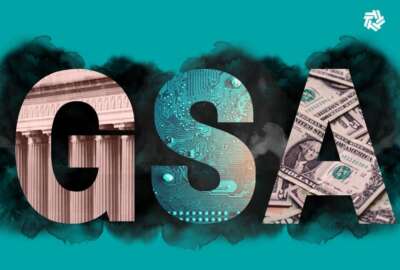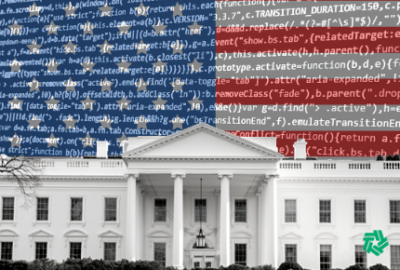Hubbard Radio Washington DC, LLC. All rights reserved. This website is not intended for users located within the European Economic Area.
House shows love for some IT modernization funds, but not all of them
The Technology Modernization Fund received $100 million from the House for fiscal 2023, which is $200 million below the Biden administration’s request.
Two of the three governmentwide technology modernization funds received some extra love from House lawmakers in the fiscal 2023 budget.
As part of a package of six bills passed by the House on July 20, the IT Oversight and Reform (ITOR) fund managed by the Office of Management and Budget received a $5.7 million plus up over its 2022 appropriation. Meanwhile, the General Services Administration’s Federal Citizen Services Fund received an even larger increase of $60.7 million over its 2022 budget.
House lawmakers, however, didn’t strongly support the Technology Modernization Fund, providing it with $100 million, which is $200 million less than the Biden administration requested. Congress zeroed out the TMF in 2022, given it has $700 million left in the bank from the $1 billion it received in the American Rescue Plan Act.
“The committee encourages GSA and the TMF Board to prioritize and fund those projects that have the most significant impact on mission enhancement and that most effectively modernize citizen-facing services, including updating public facing websites, modernizing forms, and digitizing government processes,” the report stated. “GSA’s TMF is potentially a key source of supplementary funding to help agencies overcome budgetary constraints to support zero trust architecture migration, fulfill information technology modernization projects, and address other urgent cybersecurity needs.”
Evidence act gets a boost
House lawmakers said in the Financial Services and General Government appropriations report that it expects GSA to use the $115.7 million Federal Citizen Services Fund to “result in increased delivery of information to the public and the ease of transaction with the government.”
Of the increased money, legislators expect GSA to spend $5 million on the implementation of section 3511 of the OPEN Government Data Act’s Foundations for Evidence-Based Policymaking Act.
“Specifically, these funds are used to support the establishment and maintenance of a Federal Data Catalogue; assistance to federal agencies for implementation of the requirement of comprehensive data inventories; and the establishment of an open data best practices online repository, including additional personnel dedicated to operational and standards setting support functions,” the report stated.
Additionally, House lawmakers specifically called out GSA’s expansion of its Login.gov platform and service. Over the last year, GSA has expanded the number of users to about 40 million across 27 agencies, and is looking to increase usage to 100 million users by the end of the year.
The committee said in its report that GSA needs to ensure it’s promoting an open, competitive marketplace that gives citizens choice for how they log into federal services.
“[T]he committee directs GSA to promote governmentwide policy that leverages portable identity and multiple credentialed service providers independently certified against the requisite National Institute of Standards and Technology guidelines for the highest possible pass rates, fraud prevention, and cost reduction,” the report stated.
GAO’s TMF payback decision
Under the ITOR fund, OMB would receive a total of $13.7 million, which is up from $8 million in 2022.
The U.S. Digital Service is among the biggest beneficiaries of ITOR funding, using it to “bring together the best engineering, design and government talent to change the approach to technology by deploying small and responsive teams for critical projects, which is also key to driving adoption and advancement of modern IT across agencies,” the June 2022 IT Operations Plan stated.
The reduction in the TMF funding comes on the heels of the Government Accountability Office’s determination that agencies still need to payback some of the “loans” the TMF Board gives out, but not necessarily all of the money.
“While minimum payments are not defined by law, the statute does not provide the discretion to totally waive reimbursement by an agency,” GAO stated in its July 14 decision. “[W]e conclude there is flexibility here with respect to the amounts to be paid under [NDAA 2018] Section 1078’s reimbursement requirement. The statute’s direction with respect to repayment identifies OMB and GSA as the agencies that have the discretion to determine and implement the repayment terms, including the amounts. There is a mandate for agencies to make repayments in the language stating ‘[t]he head of an agency shall reimburse [TMF] for any transfer made…’ With that mandate, OMB and GSA cannot totally waive amounts to be repaid by agencies, as they have recognized. The statute does not further define what the amounts to be repaid must be, only that they must at a minimum, designate repayment terms at a level that ensures the solvency of TMF, including operating expenses.”
GAO’s determination comes more than a year after OMB changed the requirement for full repayment, offering agencies new options for partial and minimal repayment.
Rich Beutel, a former Hill staff member who shepherded the Federal IT Acquisition Reform Act (FITARA) through the House process and now president of Cyrrus Analytics, said GAO’s decision corrected a flaw in the TMF.
“While the TMF money was always intended to be only half the story—it was always intended to be a counterpart (and a minor one at that) to the working capital funds authorization, which was viewed as the permanent fix to IT modernization resourcing issues, GAO’s affirmation of the newly relaxed TMF reimbursement requirements offers welcome relief to federal agencies that have balked at accessing this important new resource,” he said in an email to Federal News Network. “The original requirement for reimbursement of the TMF was driven by House appropriations staff who hated the idea of TMF and viewed it with suspicion.”
Alan Thomas, a former TMF Board member when he was commissioner of the Federal Acquisition Service at GSA and now chief operating officer at IntelliBridge, said TMF leaders still need to balance addressing immediate problems with the need to make sure there is money for future projects.
“The TMF is an endowment that must endure,” he said in an email to Federal News Network. “I would like to see GAO provide the payback terms for some of the TMF’s largest investments. For example, the TMF investment in Login.gov is more than $180 million and represents more than 18% of the entire $1 billion TMF appropriation in the American Rescue Plan. I’ve heard the payback on this investment is perhaps as low as 5%. Such a low payback on the TMF’s largest investment, particularly a program that has a mixed track record on cost recovery, represents risk to the solvency of the fund. One irony on payback is that since OMB, GSA, and the Office of Personnel Management received 77% of the initial $311 million invested from the TMF, if the proposed payback doesn’t materialize on these investments they’ll likely need to look at themselves for additional funds.”
Future solvency still questioned
GAO questioned the TMF’s ability to remain solvent, given what it reported in December 2019 that GSA will not cover its administrative costs for the TMF until 2025 based on the current rate of fees collected.
Thomas said he expects GAO to continue to monitor TMF finances and solvency.
At the same time, Beutel said the payback model was one of the biggest hindrances to agencies applying for the fund.
“We always knew that this requirement would have the effect of disincentivizing CIO’s throughout agencies from tapping into this new TMF funding resource, a view which I personally confirmed in conversations with agency CIOs,” he said. “By taking the TMF money and having to pay it back, they would foreclose their future budget flexibilities at a later day. This view/concern had credence in my view, and resulted in many agencies unwilling to participate in the TMF program. The lack of ‘take up’ regarding TMF funding in the ensuing years speaks for itself.”
Once OMB relieved the payback model and the fund received $1 billion from the American Rescue Act Plan, the flood gates opened. The TMF board received more than 130 proposals from 60 agencies and components totaling over $2.5 billion demonstrating a huge demand to accelerate projects.
Copyright © 2024 Federal News Network. All rights reserved. This website is not intended for users located within the European Economic Area.
Jason Miller
Jason Miller is executive editor of Federal News Network and directs news coverage on the people, policy and programs of the federal government.
Follow @jmillerWFED
Related Stories
Amelia Brust/Federal News Network

GSA looks to reach 100M Login.gov users by year’s end, starting with VA partnership
Amelia Brust/Federal News Network

OMB tells agencies how they can win some of the $1B in the Technology Modernization Fund
GAO’s report on the Technology Modernization Fund puts OMB on the offensive
Related Topics
Alan Thomas
All News
Budget
Congress
Federal Citizen Services Fund
General Services Administration
Government Accountability Office
House Appropriations Committee
IT Modernization
IT Oversight and Reform Fund
Management
Office of Management and Budget
Rich Beutel
Technology
technology modernization fund
Related Stories
-
GAO’s report on the Technology Modernization Fund puts OMB on the offensive Reporter's Notebook


